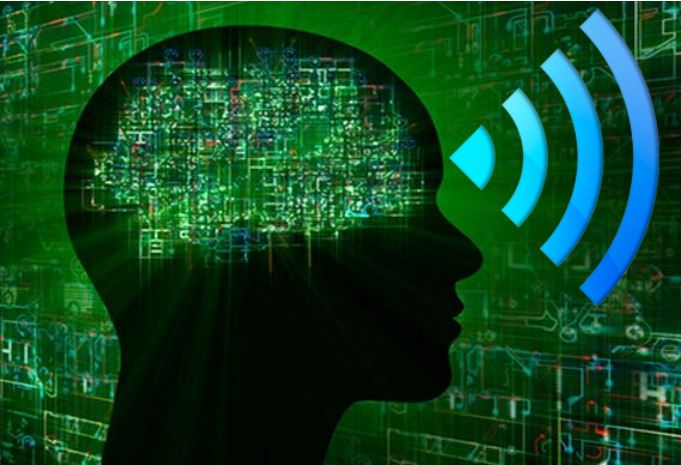Imagine a brain modem that allows you to connect with the digital world simply through thought – an implantable neural interface so you can communicate with devices and other people with the same interface just by thinking about it – no more need for laptops, tablets or smartphones, just close your eyes and think it!
That is what DARPA is currently working on. DARPA stands for Defense Advanced Research Projects Agency – an agency of the US Department of Defense responsible for developing new technologies for use by the military.
The brain-to-digital world interface, which would be implanted within a human’s brain, would act as a translator, converting between the electrochemical language used by our brain neurons and the language of information technology, which consists of ones and zeros.
 If your brain is the modem, you’d be able to communicate with wireless devices just by thinking about it. (Image: darpa.mil)
If your brain is the modem, you’d be able to communicate with wireless devices just by thinking about it. (Image: darpa.mil)
A small device implanted in the brain
The implantable, biocompatible device would be small – less than one cubic centimeter in size – more or less like two nickels stacked back-to-back.
The programme – NESD (Neural Engineering System Design) – could significantly enhance research capabilities in neurotechnology and provide a basis for new therapies, DARPA said.
NESD programme manager, Phillip Alvelda, said:
“Today’s best brain-computer interface systems are like two supercomputers trying to talk to each other using an old 300-baud modem.”
“Imagine what will become possible when we upgrade our tools to really open the channel between the human brain and modern electronics.”
The programme could, for example, make up for deficits in hearing or sight by feeding visual or auditory data into the brain at a resolution and experiential quality considerably higher than is currently possible with our technology.
 Is this the birth of telepathy? With the implant, you’d be able to communicate with other humans who also have the device in their brains, just through thought.
Is this the birth of telepathy? With the implant, you’d be able to communicate with other humans who also have the device in their brains, just through thought.
Imaging communicating with 1 million neurons at a time
Current neural interfaces approved for use by humans squeeze a huge amount of data through just one hundred channels; each one aggregating signals from tens of thousands of neurons simultaneously.
The result is imprecise and noisy. The NESD programme, contrastingly, aims to develop systems able to communicate clearly, precisely, and individually with any of up to 1,000,000 neurons in a given region of the human brain.
For the programme’s ambitious goals to be achieved, and making sure that the envisioned devices have the potential to be practical outside of a research setting, will require integrated breakthroughs across several disciplines, including synthetic biology, neuroscience, photonics, low-power electronics, medical device packaging and manufacturing, systems engineering, and clinical testing.
Apart from the hardware challenges that NESD researchers are likely to face, they will also have to develop advanced neuro-computation and mathematical techniques to first transcode high-definition sensory data between cortical neuron and electronic representations and then compress and represent all those data without loss of fidelity and functionality.
 We are at the threshold of using our brain as a wireless modem. Imagine what this technology will be like in 100 years’ time.
We are at the threshold of using our brain as a wireless modem. Imagine what this technology will be like in 100 years’ time.
DARPA aims to bring in stakeholders from a wide range of areas of technology and science, who are able and willing to offer cutting edge prototyping and manufacturing services and intellectual property to NESD scientists on a pre-competitive basis.
DARPA wants commercial applications for the device
DARPA wrote:
“In later phases of the programme, these partners could help transition the resulting technologies into research and commercial application spaces.”
“To familiarize potential participants with the technical objectives of NESD, DARPA will host a Proposers Day meeting that runs Tuesday and Wednesday, February 2-3, 2016, in Arlington, Va.”
– Special Notice announcing the Proposers Day meeting.
– More information about the Industry Group that will support NESD.
– A description of the specific capabilities sought by NESD.
DARPA plans to invest up to $60 million in the NESD programme over the next four years.
NESD forms part of a wider portfolio of programmes within DARPA that support President Barack Obama’s brain initiative.
– More information on DARPA’s work in this area.
Video – Turning the brain into a modem
Scientists at DARPA are planning to use neuro implant technology, connecting computers with human brains, thus creating living “cyborg soldiers.” RT’s Alexey Yaroshevsky takes a look at the research so far and the far-reaching implications for the future of warfare.
